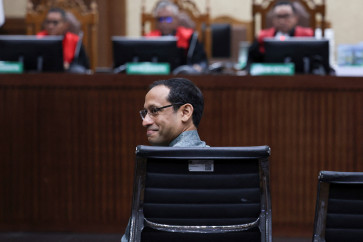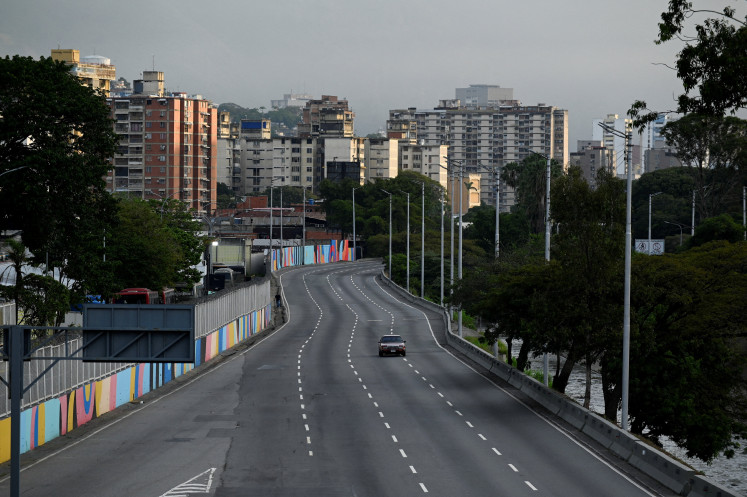Popular Reads
Top Results
Can't find what you're looking for?
View all search resultsPopular Reads
Top Results
Can't find what you're looking for?
View all search resultsPoverty reduction ‘on the right track’
Sixteen provinces made significant progress in reducing poverty levels, far outpacing the national average and making it possible for Indonesia to reduce its overall poverty rate to 8-10 percent by 2014 as targeted, a senior minister says
Change text size
Gift Premium Articles
to Anyone
S
ixteen provinces made significant progress in reducing poverty levels, far outpacing the national average and making it possible for Indonesia to reduce its overall poverty rate to 8-10 percent by 2014 as targeted, a senior minister says.
National Development Planning Minister Armida S. Alisjahbana said Tuesday that despite the country’s relatively high poverty rate of 12.36 percent, several regions known for their high poverty rates, including Gorontalo, Maluku, Papua and West Papua, achieved progressive reductions in their poverty levels over the last five years, thanks to pro-poor planning and budgeting processes.
During the last five years, she said, the patterns of poverty rate reductions among the provinces was quite different.
“We have regions that can achieve progressive decline, but in some regions it is not convincing,” she
told a press conference at the National Development Planning Ministry office.
According to the National Development Planning Agency (Bappenas), the Indonesia’s poverty rate dropped by 5.26 percent over the 2006-2011 period.
As of September 2011, the number of poor people reached 29.89 million people, or 12.36 percent of total population.
Despite recent increases in per capita income, which topped US$3,000, people at the grassroots level still face heavy pressures.
“With this progressive decline in poverty rates over the last five years, we are optimistic we can reduce the poverty rate to 10.5-11.5 percent by 2012 and between 8-10 percent by 2014,” said Armida.
The 16 provinces that outperformed the national average were Aceh, Bengkulu, Central Java, Central Sulawesi, East Java, East Nusa Tenggara (NTT), Gorontalo, Lampung, South East Sulawesi, South Sumatera, South Sulawesi, Papua, West Kalimantan, West Nusa Tenggara (NTB), West Papua and West Sulawesi.
Of the total 16 provinces, Gorontalo had the highest reduction rate at 10.38 percent, while West Java had the lowest as its poverty reduction reached only 3.84 percent over the last five years.
“With its poverty reduction of 10.38 percent during the last five years, Gorontalo reduced its poverty rate by 2 percent per year. It’s quite progressive. Consistency in decreasing its poverty rate may help Gorontalo to succeed in [further] decreasing its poverty level,” said Armida, referring to the province’s current poverty rate, which stands at more than 18 percent.
Despite its progressive reduction in the percentage of people living at or below the poverty line, a figure which stood at 9.54 percent over the last five years, Papua was still facing an absolute increase of in the number of the poor as the province’s population continued to rapidly increase, Armida said.
Prasetijono Widjojo Malajudo, the minister’s deputy on economic affairs, said that pro-poor plans and budgets, as well as activities that might contribute to the achievement of the Millenium Development Goals (MDGs), had helped Gorontalo and other provinces to achieve progressive declines in their poverty levels over the last five years.
He said 29 regencies and municipalities were now piloting pro-poor planning and budgeting, a program conducted by the National Team of Accelerating Poverty Reduction (TNP2K).
“Pro-poor planning and budgeting is a program that allows governments to keep their consistency both in the budgeting process and using the allocated budget to finance activities in priority areas, namely reducing poverty and unemployment,” he said, adding that by applying such planning and budgeting methods, local governments could monitor whether they were effectively delivering programs to targeted poverty pockets.










